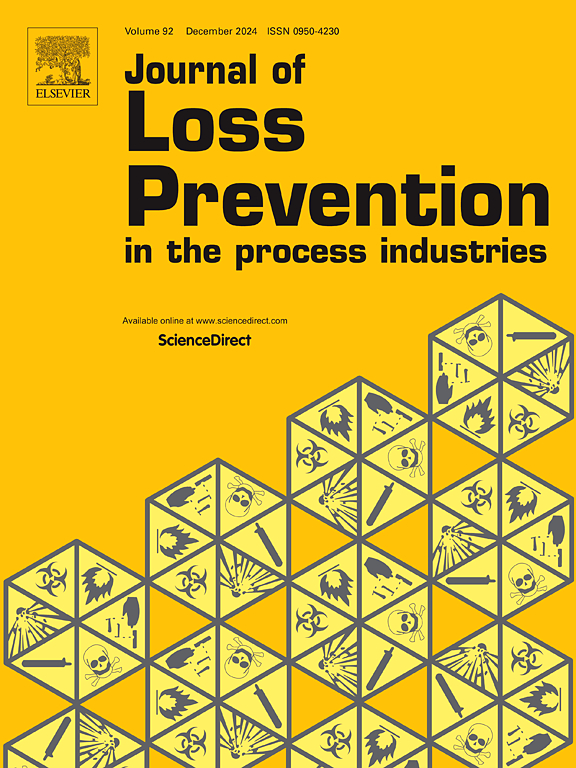Understanding the effect of buildings and environmental factors in hazardous material transportation using multi-objective Conditional Value at Risk (CVaR)
IF 3.6
3区 工程技术
Q2 ENGINEERING, CHEMICAL
Journal of Loss Prevention in The Process Industries
Pub Date : 2025-05-14
DOI:10.1016/j.jlp.2025.105678
引用次数: 0
Abstract
Road transportation is the primary method for transporting Hazardous Materials (HazMat). Its dynamic characteristics can randomly pose significant potential exposure risks to surrounding areas, including populations and buildings. Catastrophic events may occur under low-probability conditions, their consequences often exhibit asymmetric distributions, which traditional risk-averse models fail to quantify, especially in the tail of the risk distribution. Therefore, this study incorporates Conditional Value at Risk (CVaR) into the model construction develops application scenarios considering uncertainties in the transportation environment, and introduces the concept of Building Index (BI) to assign differentiated weights to various building types, thereby quantitatively analyzing the population exposure risk in surrounding areas. The goal is to minimize exposure risks to buildings and area populations, as measured by CVaR, under specific BI and transportation budget constraints. A case study using data extracted from Geographic Information Systems (GIS) is conducted to evaluate and plan optimal routes for typical Liquefied Petroleum Gas (LPG) distribution and retail scenarios in two cities of Jiangsu Province, China. The research findings indicate that the trade-off between transportation cost constraints and factors related to BI determines the optimal area population exposure risk measured by CVaR. Furthermore, the results demonstrate that CVaR-based optimization is superior to other risk-averse methods. This study provides valuable insights for transportation planners and regulatory authorities and supports the generation of optimal routing strategies based on decision-makers’ risk preferences.
基于多目标条件风险值(CVaR)的建筑和环境因素对危险物质运输的影响
公路运输是危险物品运输的主要方式。它的动态特性可能随机地对周围地区,包括人口和建筑物构成重大的潜在暴露风险。灾难性事件可能在低概率条件下发生,其后果往往呈现不对称分布,这是传统风险厌恶模型无法量化的,特别是在风险分布的尾部。因此,本研究将条件风险值(Conditional Value at Risk, CVaR)纳入模型构建,开发考虑交通环境不确定性的应用场景,并引入建筑指数(Building Index, BI)概念,对不同建筑类型进行差异化权重分配,从而定量分析周边地区人口暴露风险。目标是在特定的BI和交通预算限制下,通过CVaR来衡量,将建筑物和区域人口的暴露风险最小化。本文利用地理信息系统(GIS)提取的数据,对江苏省两个城市的典型液化石油气(LPG)配送和零售场景的最佳路线进行了评估和规划。研究结果表明,交通成本约束与商业智能相关因素之间的权衡决定了CVaR测量的最优区域人口暴露风险。此外,结果表明,基于cvar的优化优于其他风险规避方法。该研究为交通规划者和监管机构提供了有价值的见解,并支持基于决策者风险偏好的最优路线策略的生成。
本文章由计算机程序翻译,如有差异,请以英文原文为准。
求助全文
约1分钟内获得全文
求助全文
来源期刊
CiteScore
7.20
自引率
14.30%
发文量
226
审稿时长
52 days
期刊介绍:
The broad scope of the journal is process safety. Process safety is defined as the prevention and mitigation of process-related injuries and damage arising from process incidents involving fire, explosion and toxic release. Such undesired events occur in the process industries during the use, storage, manufacture, handling, and transportation of highly hazardous chemicals.

 求助内容:
求助内容: 应助结果提醒方式:
应助结果提醒方式:


